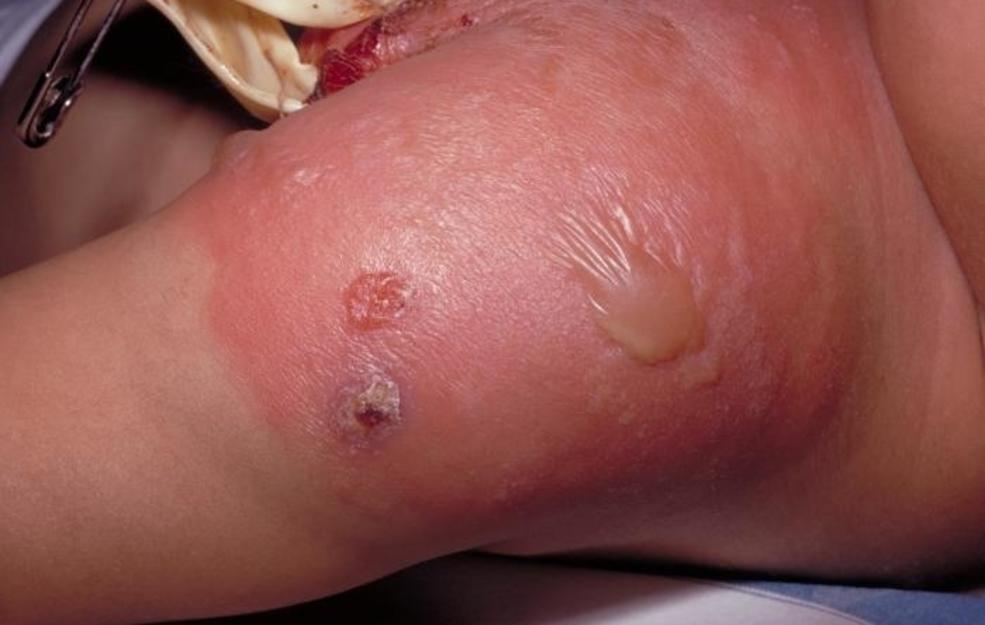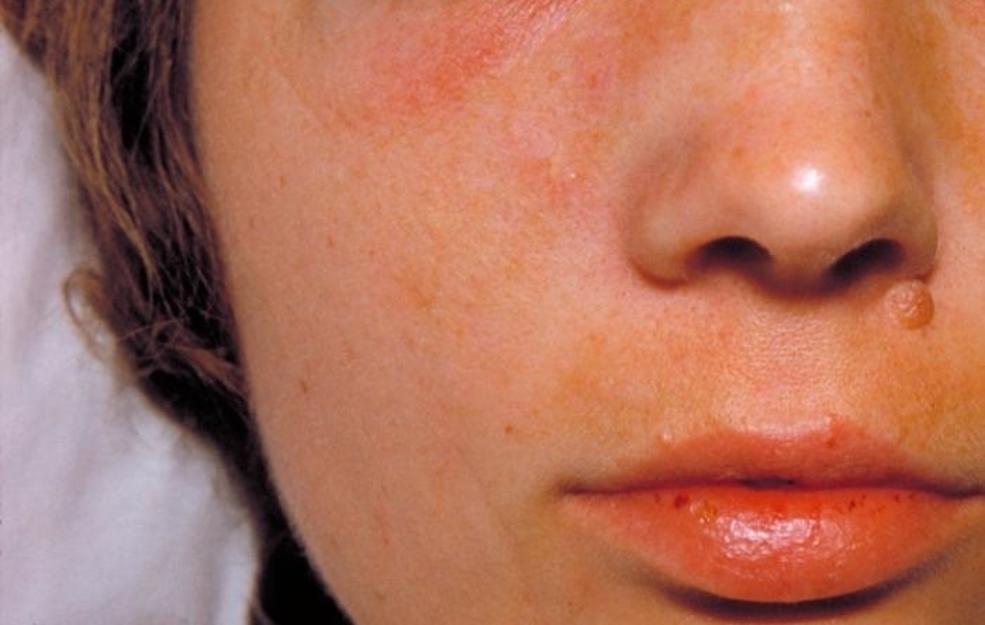What Does a Staph Infection Look Like?
Staphylococcal (or staph) infection is a type of skin infection mainly caused by staphylococcus aureus bacteria. Most healthy adults carry the staphylococcus aureus bacteria on their skin. The bacteria remain present near the nose or mouth, over the face, and around the genitals. The bacteria become active when the skin gets injured or cut and the bacteria start infecting the skin.
The foot is also prone to being infected by the bacteria, which can be caught from the floor. The staph infection starts with a little cut that gets infected with the bacteria. This usually looks like a honey-yellow crusting on the skin. The infection ranges from a boil to flesh-eating infections.
The major difference in the condition’s severity depends on the strength of the infection, how deep it goes, how easily and fast it spreads to other parts of the body, and how quickly it can be treated with antibiotics. One type of skin infection that involves the skin is cellulites, which tends to affect the skin’s deeper layers and can be treated with antibiotics.
Staph infections usually do not have the chance to thrive or cause any problems because of the immune system. If it does occur, it can take many forms, which can range from mild to moderate and even severe, depending on the part of the body affected and the strength of the individual’s immune system.
Symptoms of Staph Infection
The most common skin infections caused by staphylococcus aureus bacteria are furuncle and carbuncle. Furuncle is a type of swelling that occurs within the hair follicle. The carbuncle is a type of infection that forms a lump under the skin and slowly gets bigger if not treated on time. The smaller carbuncles can be treated with home treatments, but larger, painful infections need proper medical treatment.
Common staph symptoms which have a tendency to affect the skin are:
- Development of an abscess, which could lead to redness, pain, and swelling. It can be in the form of an infected hair follicle or a boil on the skin and, in some cases, it could look like a bump similar to a cystic acne pimple. Those who develop a skin staph infection have a visible swollen pocket, which would be filled with pus and normally feels tender when touched.
- Severe, painful rashes caused by the infection. One such rash is called impetigo, which is contagious and can cause large blisters. These blisters can form crust coatings or open up and release the fluid filling these blisters.
- When it comes to a baby’s skin staph infection, it could cause rash or blisters, which would open and expose raw skin. Sometimes, babies can also develop fever.
Causes of Staph Infection
This skin infection is mainly caused when the staphylococcus aureus bacteria comes into contact with open wounds or injuries mainly seen in either the elderly or children. The open wound becomes reddish in color, and fluid starts oozing out, developing a brownish-yellow scab known as impetigo.
It is a highly infectious disease which can easily spread to other body parts by scratching. Most of the infections can be treated at home when in the primary stages. If the person is suffering from a severe case of staph infection, however, he or she needs immediate medical attention.
Making a Diagnosis of Staph Infection
Minor staph infections can be treated at home, but you have to get medical attention the moment you notice the following symptoms:
- Painful blisters full of pus
- Skin area becomes red and painful
- Mild fever and feeling tired
- The skin infections are passed between family members
Doctors diagnose the staph infection by testing the bacteria from the infected area, which has become crusty with drainage, or a wide, red blister. The microbiological technique is used to test the staph infection for its resistance against antibiotics such as methicillin.
The different types of staph infections that are either minor and easily treated or major and need immediate attention are as follows:
- Impetigo: When streptococcus or staphylococcus aureus bacteria come in contact with an open sore or wound, they cause a bacterial skin infection. Usually, children and elderly adults suffer from red sores, which break open and ooze fluid that develops a yellowish-brown scab. Impetigo is a contagious disease that spreads very easily.
- Bacteremia:This occurs when the infected bacteria enter the blood stream and spread the infection to different areas of the body. It causes fever as the first warning. Areas like the heart valves and the immune system are at a high risk if the person suffers from any health issue.
- Toxic shock syndrome: This could lead to a life-threatening condition caused by severe damage inside the body by the staph infection. The person will have a high fever, vomiting, rashes on the hands or palms, muscle aches, and headache. The patient should be taken to the hospital immediately.
Treatment of Staph Infection
The two main treatments for a staph infection are staph surgical and antibiotic treatments, which are highly effective in treating and reducing the staph infection. Surgical treatments are required only when some tissues continue to work along with bacteria and need to be surgically removed. There are many antibiotics which can work against a staph infection when it reaches a severe stage.
Simple staph infections can be treated at a primary level by the family doctor or pediatrician. But serious and more complicated staph infections need more attention and emergency treatments, especially if the patient reaches a critical stage. Infectious-disease consultants or lung specialists are required to treat the patient, and the infected and dying tissues are surgically removed.
The infection can become life-threatening if neglected. It can be cured, but it mainly depends on how fast the infection spreads and how effectively it can be treated with antibiotics.
Prevention of Staph Infection
Staph infections are contagious, so one needs to take precautions since the infectious bacteria resides close to the body, such as in the sweat glands, nose, mouth, and other areas on the skin. The staph bacteria can even be transmitted through person-to-person contact, including clothes.
One can also reduce the risk of infection by treating wounds or scratches appropriately and by cleaning them regularly with antibacterial medications.
Home remedies that can effectively prevent staph infections include tea tree oil, apple cider vinegar, sea salt, and onions, which can be used in everyday life. However, you should consult your doctor before using any home remedies.
Life Style & Coping With Staph Infection
One should get into the habit of washing hands regularly and keeping the air clean and hygienic. Never share clothes or towels with other people without washing them clean. Wear protective garments, such as gloves, masks, gowns, etc., when working in hospitals. Taking care of injuries and wounds without delay also helps protect you and your family from a staph infection.

























